No bad puns today, nothing remotely good was coming to mind. You can thank me later. 😉
I bought this one on a whim. The listing showed a few serious stains, but they’re all on the inside panel and are hidden when it’s worn. Also, because of the stains, I got it for a steal. It’s a little small on me (story of my life), but it’s so detailed and beautiful that I don’t mind.
It’s got a gorgeous temple and mountain design, with water around the hem, and flowers, glorious flowers! Every time I look, I find something new and interesting. So far I’ve found multitudinous grasses, plum, chrysanthemum, iris, pines, peonies, bamboo, pawlonia, maple.. well, you get the point!
I paired it up with an equally festive and floral orange nagoya obi, and blue and green accessories to bring out the water around the hem. Also, say hi to my kitty, Tribble. She also wears white tabi!
Since I no longer own this kimono, there is no catalogue photo of it, unfortunately.
Items used in this coordination
- Orange Floral
- Ice-blue Rinzu
- Shades of Indigo
- Black and Blue Casual Zori

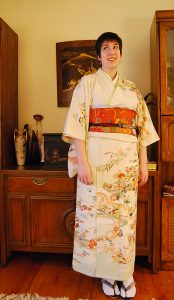
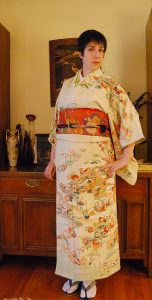
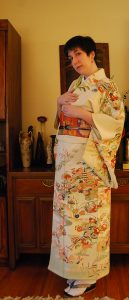
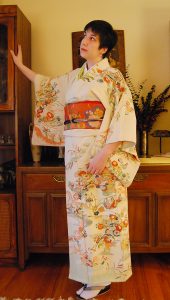
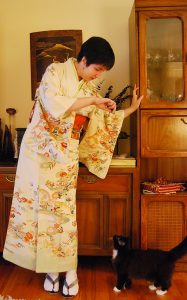
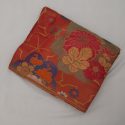
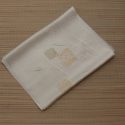

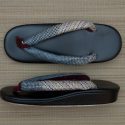
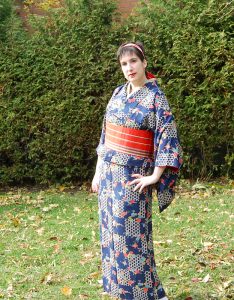


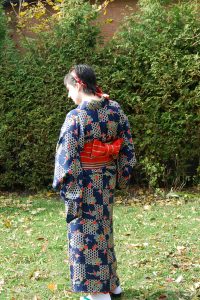
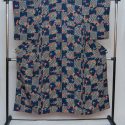
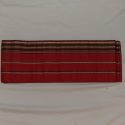
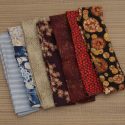













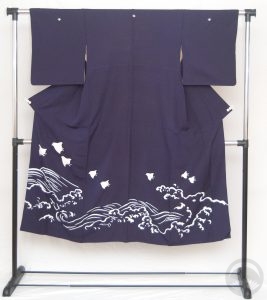


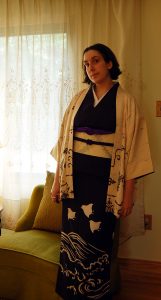
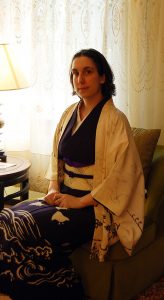


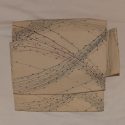
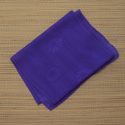


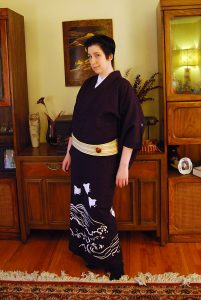
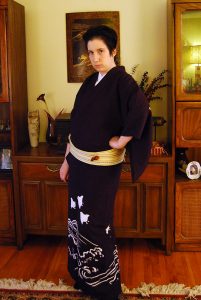
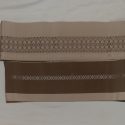
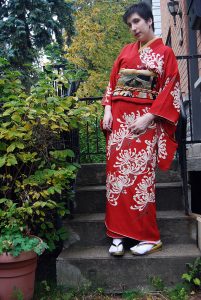
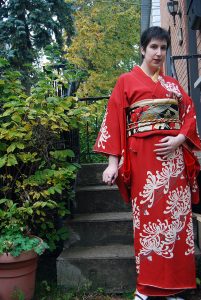
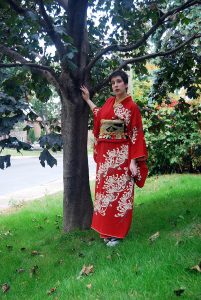
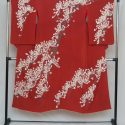
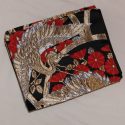


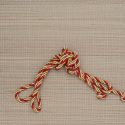











 Bebe Taian
Bebe Taian CHOKO Blog
CHOKO Blog Gion Kobu
Gion Kobu